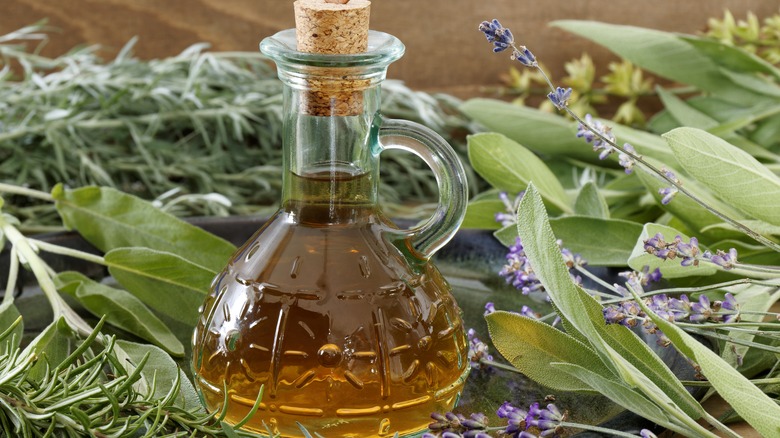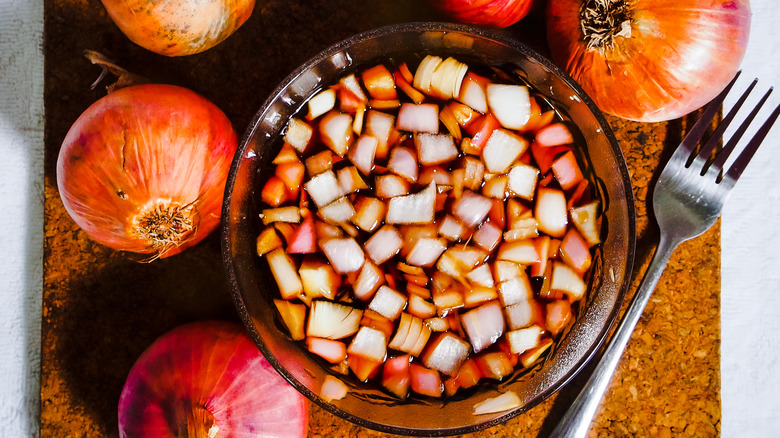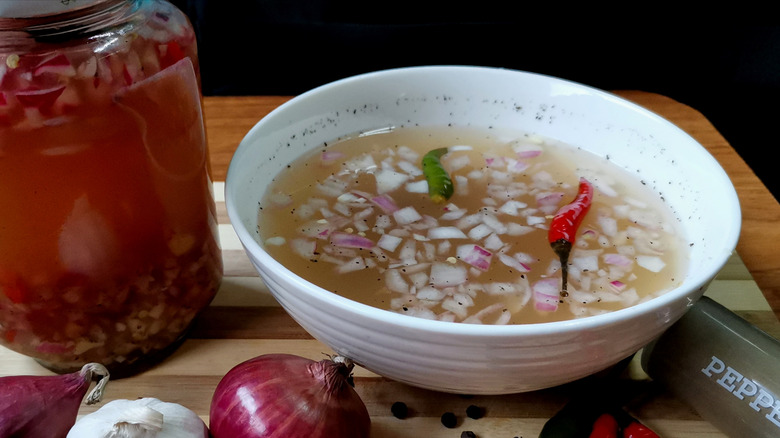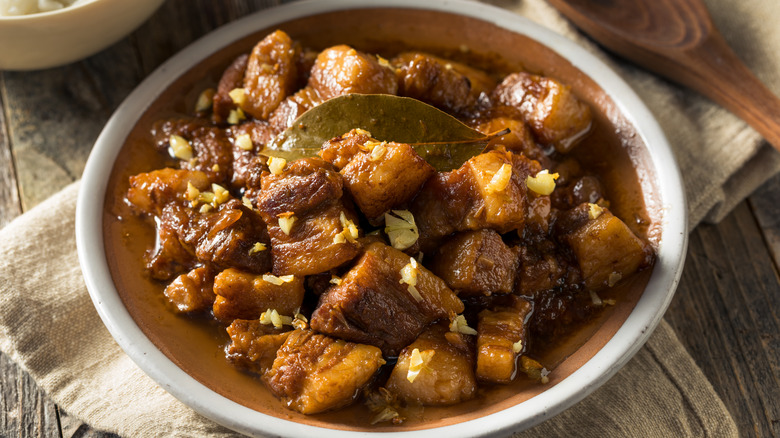The Reason Cane Vinegar Deserves A Spot In Your Pantry
When Filipinos reach into their pantries for vinegar, they aren't looking for balsamic, apple cider, or wine vinegar, even though these are now found in many kitchens across the country. Chances are they'd be reaching for a bottle of cane vinegar, which is made by fermenting juices extracted from sugar cane, one of the country's most important agricultural products.
Vinegar has an important place in the Filipino kitchen, which can explain why the Philippines' well-loved food writer and culinary historian, Doreen Fernandez calls vinegar the country's "principal condiment." Not only are so many of the country's best-loved and most recognized dishes made with vinegar, but it is an important ingredient in various dipping sauces, too.
But the popularity of cane vinegar isn't just fuelled by the notion that Filipinos like their food particularly tart. The cuisine's predilection for sourness could have likely come out of a sense of pragmatism, too, especially since vinegar plays a role in helping to preserve perishable items that might otherwise spoil in the tropical heat.
What is cane vinegar?
While many kinds of vinegar are native to the Philippines and can complement different types of Filipino food, cane vinegar or sukang maasim (which translates as sour vinegar) is hailed as a favorite because it is described as being light, mild, smooth, and fresh. Cane vinegar is made by crushing sugar cane and extracting its syrup, then adding a fermentation agent. While it is made with sugar cane, the vinegar isn't as sweet as it might be, and because it is mild, it can lend a tartness without overpowering the flavors of other ingredients it is meant to share the culinary stage with.
There is another bolder type of cane vinegar: sukang Iloco (vinegar from Ilocos), which has its own very distinct flavor profile. Like its more lighthearted, playful souring agent sibling, sukang Iloco is made with sugarcane, but its base is a local sugarcane liquor. Given that sukang maasim and sukang Iloco are both very different, you wouldn't be amiss if you were to stock both in your pantry.
How you can use cane vinegar in your cooking
Thanks to the mild and mellow flavor profile associated with the more common form of cane vinegar (sukang maasim), the condiment can be used as an ingredient for dishes that require a more neutral, acidic ingredient. It is the preferred souring agent for traditional papaya pickles, also known as atchara. It is also a key ingredient for the well-loved dipping sauce or sawsawan mixed with onion, garlic, and chili, which is served as a condiment to enhance spring rolls, grilled pork belly, deep-fried pork knuckles, and fried fish.
Cane vinegar is also the go-to ingredient for popular Filipino dishes like adobo, as well as some types of paksiw, a type of dish where meat or seafood is poached with vinegar. Because it is not very strong, cane vinegar can even be used to marinate meats, such as pork leg, that are then braised or stewed. Outside of these applications, cane vinegar can be used to create flavorful vinaigrettes or even desserts with a more tarty profile, like lemon custard.
How cane vinegar compares to other vinegars
In terms of intensity and flavor, cane vinegar is seen as being similar to white wine vinegar, champagne vinegar, rice vinegar, and to a certain extent, apple cider vinegar; as such, it can be used interchangeably across different cuisines. For instance, Japanese rice vinegar or apple cider vinegar can be used in place of cane vinegar to make adobo, just as cane vinegar can be used to make vinegar-based barbecue sauces.
When compared to sukang lloco, the more robust cane vinegar, sukang maasim is much milder in flavor and wouldn't be used as a dipping sauce for certain dishes that sukang lloco would be best for. For example, sukang lloco is typically served with richer, savory meals such as longganisa, a Filipino breakfast sausage, or empanadas.
You can also reach for a bottle of cane vinegar to make salad dressings, the way you might use wine vinegar or Balsamic vinegar. If you're enjoying a plate of British fish and chips but don't have any malt vinegar, cane vinegar would be a good substitute in this instance too. And as for pickling or making marinades, cane vinegar works well in these situations, such as pickled herring or creating a sweet and sour sauce.



